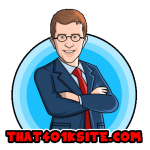Competition for qualified employees is becoming intense. As a result, firms that you compete with for talent will be buffing up their benefits packages in 2017. Listed below are the changes that leading-edge employers will make to their 401k plans as a result of the most important 2017 401k trends. Although these 2017 401k trends are numbered, they are not shown in order of importance – all of these items are equally important.
1. Offer only R6 or similar share classes
Many mutual fund companies offer or are originating R6 or similar share classes of the investment funds they offer for retirement plans (hence the “R”). These share classes normally provide no revenue sharing and are therefore cheaper than any other share classes offered. They also typically have no minimum plan investment requirements. If your 401k plan does not use all R6 or similar share classes now (i.e.; share classes paying no 12b-1 or sub-TA fees), make sure you convert to them in 2017.
2. Lower the cost of your target date fund series
Most experts feel that roughly 75% of all participants probably belong in target date funds. The vast majority of 401k plans use target date funds as their QDIA option. As a result, the mutual fund companies feel that their most important product is their target date series. The market for target date funds is incredibly competitive, and fund companies will continue to lower their fees (expense ratios) in an effort to remain competitive. Make sure you evaluate your target date series in 2017.
3. Offer online investment advice for participants
One of the most significant 2017 401k trends, offering participants online investment advice, will continue to rise in importance. Most larger plan sponsors are now providing some type of online investment advice option to rise in importance. Online investment advice can be sourced from a number of providers at costs ranging from free to 75 basis points.
4. Answer all fiduciary questions
With final fiduciary rules going into effect in April of 2017, progressive plan sponsors will endeavor to ensure that they understand the fiduciary roles tied to their 401k plans. Especially with regard to their investment advisers. Every 401k plan should be working with an investment adviser who is signed on as a fiduciary by April. Are you?
5. Hire 401k plan-only investment advisers
It is becoming more important to hire investment advisers who work only with 401k plans. As these plans continue to become more complex, it is vital to have investment advisers who spend 100% of their time working with them. These advisers do a much better job of making things simple for you and your plan participants and have fewer conflicts of interest. If you work with an advisor who has a business that includes individuals, foundations and institutions, etc., consider switching to an adviser who works only with 401k plans. You will receive much better advice.
6. Integrate financial wellness education with employee 401k education
Many employers are finding that employees who don’t know how to create a budget can’t begin to understand how to diversify their 401k plan accounts. Without basic financial knowledge, employees have a hard time understanding more advanced concepts like risk and volatility. In response, leading-edge employers will be marrying financial wellness education with employee 401k education in 2017.
7. Provide socially conscious investment options
Each year there are trends that are either rising or falling in importance. This is one of the 2017 401k trends that continues to rise. The data indicate that your millennial employees are much more interested in socially responsible investing (SRI) than prior generations. Increase the value of your 401k plan to this important group by incorporating SRI into your 401k plan.
2017 401k Trends Affecting Your Executive Group
8. Add a Roth in-plan 401k conversion option
Offering a Roth in-plan conversion option in your 401k plan costs virtually nothing. This feature can provide tax planning options for all participants but is especially valued by executives. A Roth in-plan conversion option allows participants to convert their pre-tax balances to Roth after-tax balances at any time.
9. Allow after-tax contributions
Interest in after-tax contributions has returned! I am not referring to Roth 401k contributions, but traditional, old, boring after-tax contributions. The advantage? Maximum total contributions to a 401k plan rise from $18,000 to $54,000 in 2017 when participants have the ability to make after-tax contributions.
10. Incorporate HSA accounts into retirement planning
The role of Health Savings Accounts (HSAs) in retirement planning is just beginning to be appreciated. Many plan sponsors now realize that maxing out HSA accounts can be a significant retirement as well as health care benefit for executives.







